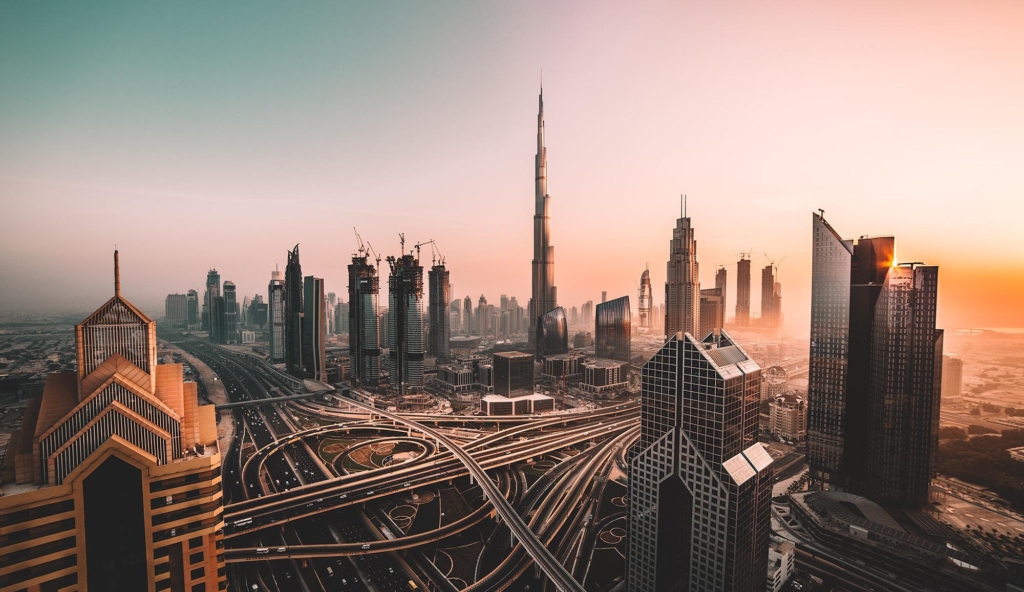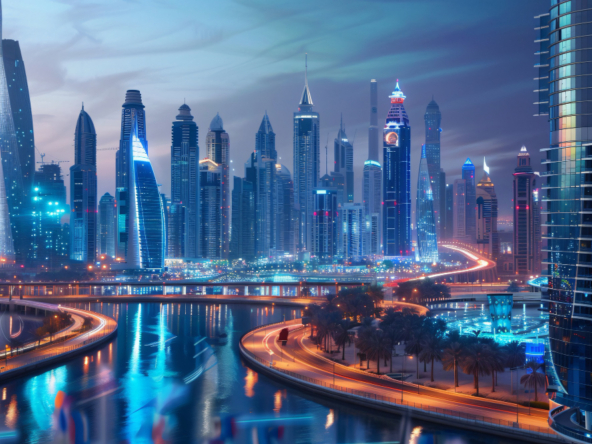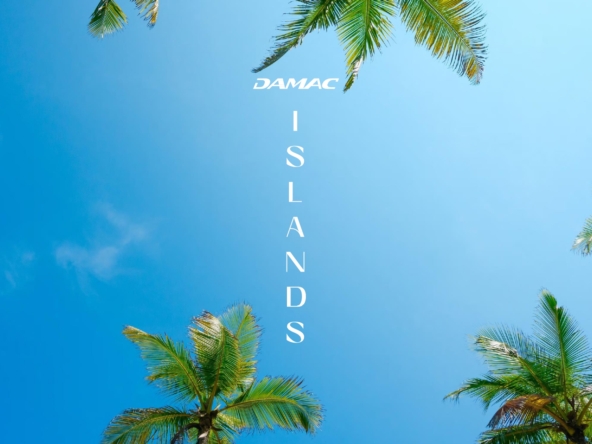
Dubai has firmly established itself as a global launchpad for luxury living and property investment. Its blend of innovative urban planning, a business-friendly ecosystem, and modern infrastructure continues to attract expat millionaires, corporate executives, and entrepreneurial talent. While Dubai’s real estate market has witnessed exponential growth since the early 2000s, the big question remains: Can it sustain its upward trajectory? Let’s delve into the factors shaping the future of Dubai’s real estate sector and explore why the emirate remains a top choice for investors and residents alike.
Strategic Foundations of Growth
Dubai’s growth story is anchored in its strategic planning, political stability, and visionary leadership.
- Population Boom and Urban Planning: Dubai’s population has grown by over 70% since 2007, reaching approximately 3.5 million in 2023. This rapid growth has been complemented by carefully designed urban planning that maintains high livability standards. From family-friendly neighborhoods like Arabian Ranches to waterfront destinations like Dubai Marina, Dubai’s planning caters to diverse demographic needs.
- Tourism as a Pillar of Stability: With over 16 million tourists annually, Dubai’s thriving tourism sector continues to provide a steady stream of demand for hospitality and short-term rental properties. Iconic attractions like the Burj Khalifa, Palm Jumeirah, and the Museum of the Future keep the city on the global travel map.
- Global Connectivity: Dubai’s location makes it a hub for international travel and trade. Expansions at Dubai International Airport and Al Maktoum International Airport, coupled with state-of-the-art logistics infrastructure, ensure the city remains a global nexus.
Evolving Demand and Supply Dynamics
Dubai’s real estate market has successfully balanced demand and supply through strategic development and regulation.
- Post-Pandemic Resilience: Following the pandemic, Dubai introduced economic reforms, long-term visas, and ownership rights for expatriates, solidifying its position as a hub for global talent. These reforms have spurred demand, with the market projected to grow at an 8.5% compound annual growth rate (CAGR), reaching a value of $39 billion by 2025.
- Diverse Property Offerings: Dubai caters to a wide spectrum of buyers. Luxury projects like Emaar’s Downtown Dubai attract high-net-worth individuals, while more affordable communities like Jumeirah Village Circle (JVC) and Dubai South meet the needs of middle-income residents.
The Role of Mega Projects in Shaping Dubai’s Skyline
Dubai’s future is heavily influenced by its ambitious mega projects, which integrate residential, commercial, and leisure components into cohesive master plans.
- Mohammed Bin Rashid (MBR) City: This colossal development aims to house over 135,000 residents in its initial phase. Key attractions include the Dubai Creek Tower, a new architectural icon, and a vibrant downtown district.
- Dubai Creek Harbour: Positioned as the future of urban living, this waterfront community combines sustainability with luxury. It features the Creek Beach, retail hubs, and world-class recreational spaces.
- Expo City Dubai: Building on the success of Expo 2020, this site is being transformed into a residential and commercial hub, ensuring its legacy as a driver of economic growth.
Rising Affordability and Inclusion
The real estate market in Dubai is increasingly catering to a broader audience by focusing on affordability and inclusivity.
- Mid-Income Housing: Developers are now launching mid-income projects in areas like International City, JVC, and Dubailand. These developments provide high-quality homes at accessible price points.
- Improved Financing Options: Low mortgage rates (as low as 2.5%) and relaxed loan-to-value (LTV) ratios for first-time buyers have made property ownership more accessible to residents.
- Visa Reforms: Long-term visas and Golden Visa schemes for property investors enhance the appeal of settling in Dubai.
Sustainability and Green Initiatives
Dubai’s vision for the future includes a strong focus on sustainability and ecological responsibility.
- Green Building Standards: New mandates require developments to adhere to stringent green building codes. Around 25% of future projects, including MBR City, are committed to sustainability.
- Renewable Energy Goals: Dubai plans to generate 75% of its energy from clean sources by 2050, further enhancing its global standing as an eco-conscious city.
The Future of Dubai Real Estate: Opportunities, Trends, and What Lies Ahead
Dubai has firmly established itself as a global launchpad for luxury living and property investment. Its blend of innovative urban planning, a business-friendly ecosystem, and modern infrastructure continues to attract expat millionaires, corporate executives, and entrepreneurial talent. While Dubai’s real estate market has witnessed exponential growth since the early 2000s, the big question remains: Can it sustain its upward trajectory? Let’s delve into the factors shaping the future of Dubai’s real estate sector and explore why the emirate remains a top choice for investors and residents alike.
Strategic Foundations of Growth
Dubai’s growth story is anchored in its strategic planning, political stability, and visionary leadership.
- Population Boom and Urban Planning: Dubai’s population has grown by over 70% since 2007, reaching approximately 3.5 million in 2023. This rapid growth has been complemented by carefully designed urban planning that maintains high livability standards. From family-friendly neighborhoods like Arabian Ranches to waterfront destinations like Dubai Marina, Dubai’s planning caters to diverse demographic needs.
- Tourism as a Pillar of Stability: With over 16 million tourists annually, Dubai’s thriving tourism sector continues to provide a steady stream of demand for hospitality and short-term rental properties. Iconic attractions like the Burj Khalifa, Palm Jumeirah, and the Museum of the Future keep the city on the global travel map.
- Global Connectivity: Dubai’s location makes it a hub for international travel and trade. Expansions at Dubai International Airport and Al Maktoum International Airport, coupled with state-of-the-art logistics infrastructure, ensure the city remains a global nexus.
Evolving Demand and Supply Dynamics
Dubai’s real estate market has successfully balanced demand and supply through strategic development and regulation.
- Post-Pandemic Resilience: Following the pandemic, Dubai introduced economic reforms, long-term visas, and ownership rights for expatriates, solidifying its position as a hub for global talent. These reforms have spurred demand, with the market projected to grow at an 8.5% compound annual growth rate (CAGR), reaching a value of $39 billion by 2025.
- Diverse Property Offerings: Dubai caters to a wide spectrum of buyers. Luxury projects like Emaar’s Downtown Dubai attract high-net-worth individuals, while more affordable communities like Jumeirah Village Circle (JVC) and Dubai South meet the needs of middle-income residents.
The Role of Mega Projects in Shaping Dubai’s Skyline
Dubai’s future is heavily influenced by its ambitious mega projects, which integrate residential, commercial, and leisure components into cohesive master plans.
- Mohammed Bin Rashid (MBR) City: This colossal development aims to house over 135,000 residents in its initial phase. Key attractions include the Dubai Creek Tower, a new architectural icon, and a vibrant downtown district.
- Dubai Creek Harbour: Positioned as the future of urban living, this waterfront community combines sustainability with luxury. It features the Creek Beach, retail hubs, and world-class recreational spaces.
- Expo City Dubai: Building on the success of Expo 2020, this site is being transformed into a residential and commercial hub, ensuring its legacy as a driver of economic growth.
Rising Affordability and Inclusion
The real estate market in Dubai is increasingly catering to a broader audience by focusing on affordability and inclusivity.
- Mid-Income Housing: Developers are now launching mid-income projects in areas like International City, JVC, and Dubailand. These developments provide high-quality homes at accessible price points.
- Improved Financing Options: Low mortgage rates (as low as 2.5%) and relaxed loan-to-value (LTV) ratios for first-time buyers have made property ownership more accessible to residents.
- Visa Reforms: Long-term visas and Golden Visa schemes for property investors enhance the appeal of settling in Dubai.
Sustainability and Green Initiatives
Dubai’s vision for the future includes a strong focus on sustainability and ecological responsibility.
- Green Building Standards: New mandates require developments to adhere to stringent green building codes. Around 25% of future projects, including MBR City, are committed to sustainability.
- Renewable Energy Goals: Dubai plans to generate 75% of its energy from clean sources by 2050, further enhancing its global standing as an eco-conscious city.
Technology as a Game-Changer
Dubai is leading the charge in integrating technology into its real estate sector, solidifying its status as a smart city.
- PropTech Adoption: Developers and agents are leveraging blockchain for secure transactions, AI for pricing analysis, and virtual reality for immersive property tours.
- Smart Living: Homes equipped with IoT-enabled systems for lighting, climate control, and security are becoming the norm.
Expo 2020’s Ripple Effect
Expo 2020 showcased Dubai’s potential to a global audience, leaving a lasting impact on its real estate sector.
- Corporate Expansion: The event attracted multinational corporations, many of which have established regional headquarters in Dubai, boosting demand for commercial properties.
- Startup Ecosystem: Entrepreneurs flocked to Dubai during Expo 2020, driving demand for co-working spaces and office rentals.
Challenges and Risks
While Dubai’s real estate future looks promising, challenges such as oversupply and economic volatility need to be managed.
- Oversupply Concerns: The influx of new inventory could outpace demand if not carefully regulated.
- Economic Sensitivity: Global economic fluctuations and geopolitical factors may impact investor sentiment.
Looking Ahead: Expert Predictions
Industry experts remain optimistic about Dubai’s real estate prospects, emphasizing sustainable growth and stable appreciation.
- Price Growth: Prime residential prices are expected to grow by 5-7% annually through 2025.
- Increased Demand: Buyer categories are expanding, with families, professionals, and international investors driving sales.
Conclusion: A Bright Future for Dubai Real Estate
Dubai’s real estate market is poised for steady growth, underpinned by strategic initiatives, technological advancements, and sustainability goals. Its appeal as a global business hub, combined with its unparalleled lifestyle offerings, ensures continued demand from diverse buyer segments.
Whether you’re an investor looking for high yields or a family seeking a vibrant, inclusive community, Dubai offers something for everyone. As the city balances innovation with tradition, its real estate market will remain a beacon of opportunity for years to come.

